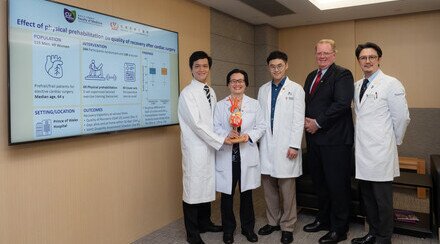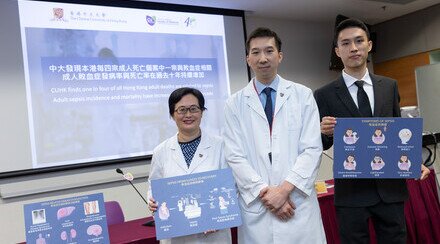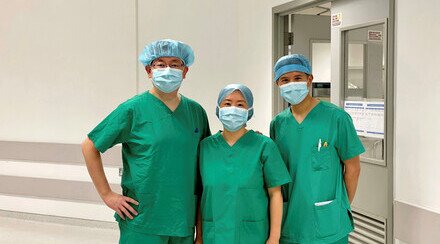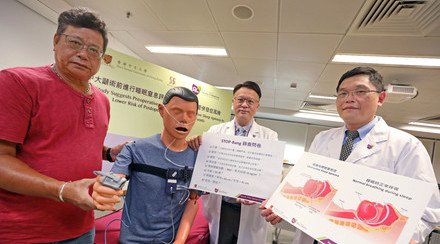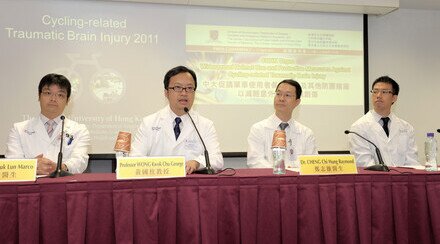CUHK finds teacher-led cardiopulmonary resuscitation training is as effective for secondary school students as training led by medical staff
Delays in cardiopulmonary resuscitation and defibrillation will reduce cardiac arrest patients’ survival chances. Equipping the community with basic life support knowledge and skills will therefore help save lives. A study conducted by The Chinese University of Hong Kong (CUHK)’s Faculty of Medicine (CU Medicine) has found that secondary school teachers equipped with basic life support knowledge and skills do as well, or almost as well, as healthcare professionals at instructing secondary school students how to perform cardiopulmonary resuscitation (CPR).
The research team hopes that the study results will encourage schools to fit the two-hour compression-only CPR and automated external defibrillator (CO-CPRAED) course into their school curriculums, which will help increase survival rates from out-of-hospital cardiac arrests. Study details have been published in the journal Resuscitation Plus.
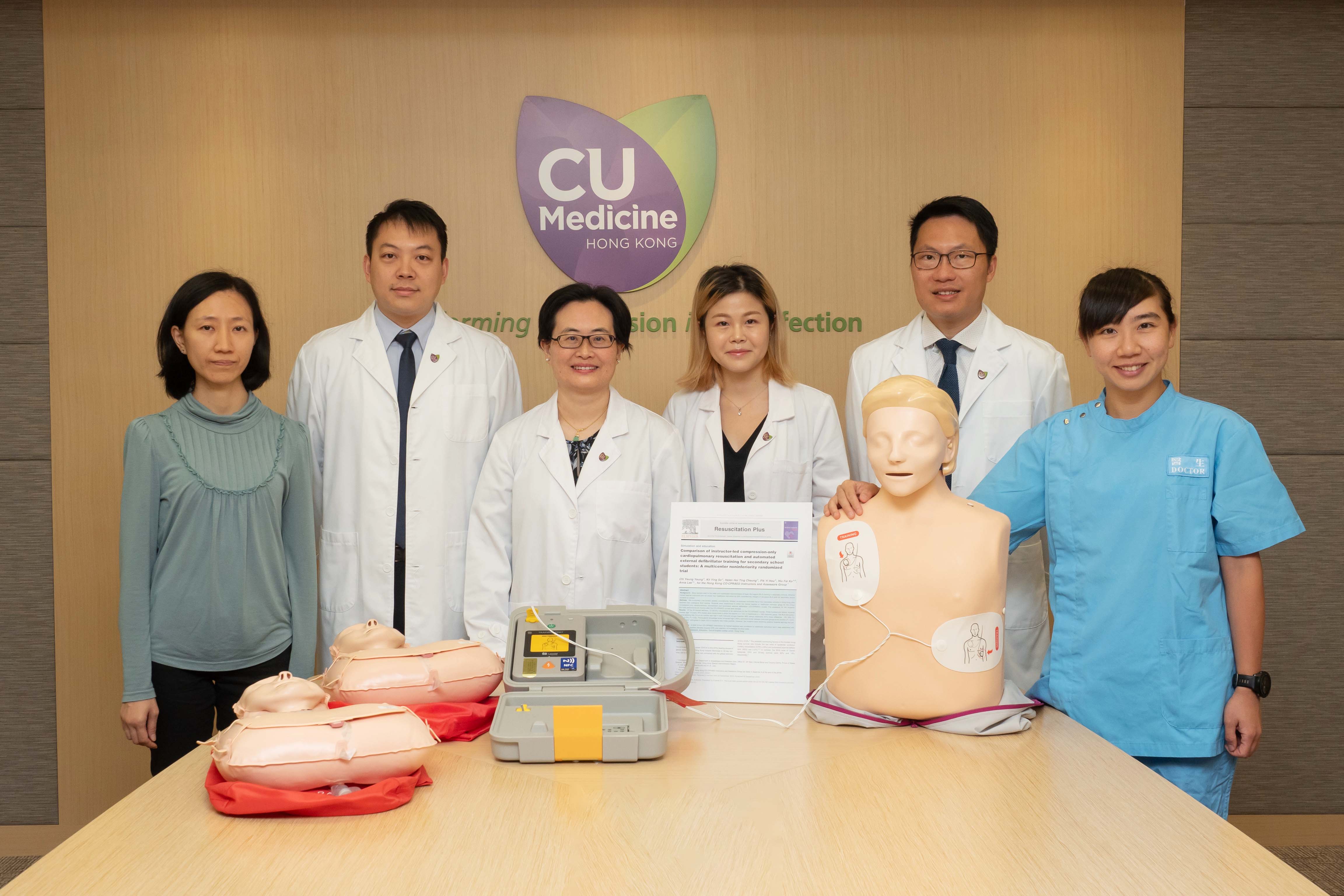
A CU Medicine’s study has found that secondary school teachers equipped with basic life support knowledge and skills do as well as healthcare professionals at instructing secondary school students how to perform cardiopulmonary resuscitation (CPR). The research team hopes that the study results will encourage schools to fit the two-hour compression-only CPR and automated external defibrillator (CO-CPRAED) course into their school curriculums, which will help increase survival rates from out-of-hospital cardiac arrests.
Featured in the photo are (from left) Ms Grace Hou, Nurse from the Department of Anaesthesia and Intensive Care; Dr Stephen Yeung, Clinical Assistant Professor (honorary) in Accident and Emergency Medicine Academic Unit; Professor Anna Lee; Ms Helen Cheung, PhD student; Dr Frank Ko, Clinical Associate Professor (honorary); from the Department of Anaesthesia and Intensive Care at CU Medicine; and Dr So Kit-ying, a specialist in Emergency Medicine.
Hope that study results encourage schools to fit two-hour course into their curriculums
The study was conducted in four secondary schools in Hong Kong. Over 300 students aged 14 to 18 years were randomised to either the trained teacher who attended the American Heart Association basic life support provider course or healthcare instructor group for the two-hour CO-CPRAED course. Students’ basic life support skill performance was assessed six months after the course.
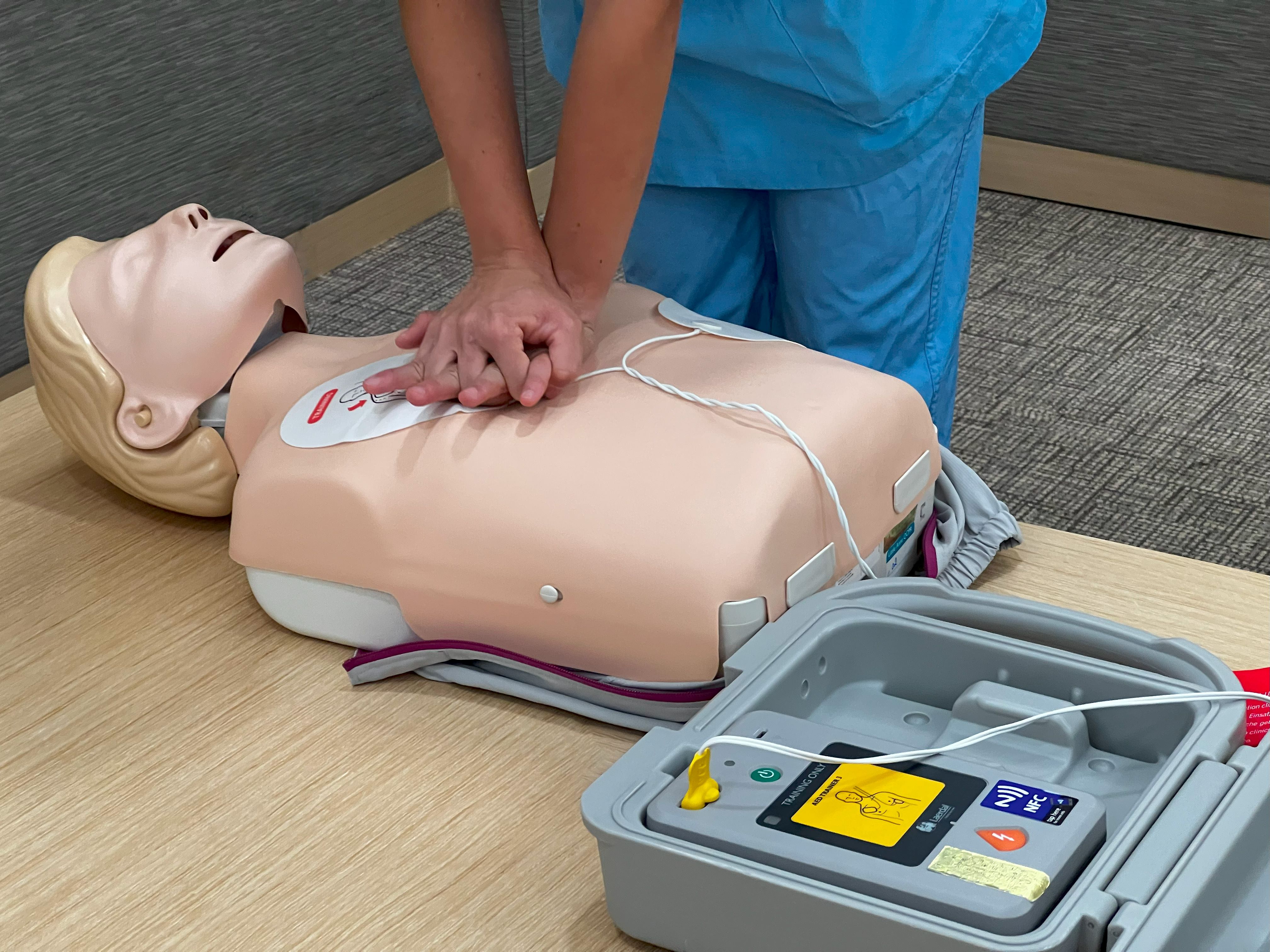
In the study, secondary students were trained in basic life support during a two-hour course using video, manikins and sham automated external defibrillators.
The key findings of the study are:
- Trained teachers (Group A) were not different or at least not worse than healthcare professionals (Group B) at instructing secondary students in basic life support during a two-hour course using a video, manikins and sham automated external defibrillators. Group A’s pass rate of objective structured clinical examination was 88%, while that of group B was 91%.
- Six months after attending the CO-CPRAED course, most students in both instructor groups (≥ 88%) remembered how to perform hands-on compression-only CPR correctly and use an AED safely on manikins.
- Students’ knowledge of basic life support remained high (>90%) in both instructor groups at six months after CO-CPRAED training.
- About half the teachers and students were worried about legal responsibility when using CPR as Hong Kong does not currently have a Good Samaritan law[1].
First author of the study Dr Stephen Yeung Chi-yeung, Clinical Assistant Professor (honorary) in CU Medicine’s Accident and Emergency Medicine Academic Unit, commented, “For every one-minute delay in CPR and defibrillation, the chance of survival is reduced by about 10%. However, our local bystander CPR rate is relatively low, below 30%, and only a few people, about 2%, know how to use an AED properly. Teaching these basic life support skills to teenagers in schools is worthwhile, as we can potentially educate whole generations to quickly respond to community cardiac arrests. This is one way to improve local low survival rates in patients with out-of-hospital cardiac arrests.”
Last and corresponding author Professor Anna Lee, from CU Medicine’s Department of Anaesthesia and Intensive Care, concluded, “All secondary students in our study were motivated and keen to learn new CPR and AED skills. Our findings underscore the feasibility and effectiveness of training teachers to teach their students basic life support skills at school. It is far more flexible for the school than organising healthcare professionals to come in to conduct the same CO-CPRAED course, since they are not always available. Our next study, which is about to begin, will train more teachers from local secondary schools how to both teach and assess students’ basic life support skills so that the CO-CPRAED course has long-term sustainability. We really hope that the Education Bureau will support the two-hour CO-CPRAED course and fit it into the busy curriculum in every school.”
Schools who want to find out more about the new study, please contact Ms Grace Hou (research nurse) by email at gracehou@cuhk.edu.hk.
[1] Good Samaritan law offers legal protection to individuals who have provided assistance voluntarily to another injured or ill person(s) from being sued or prosecuted for unintentional injury or wrongful death.


